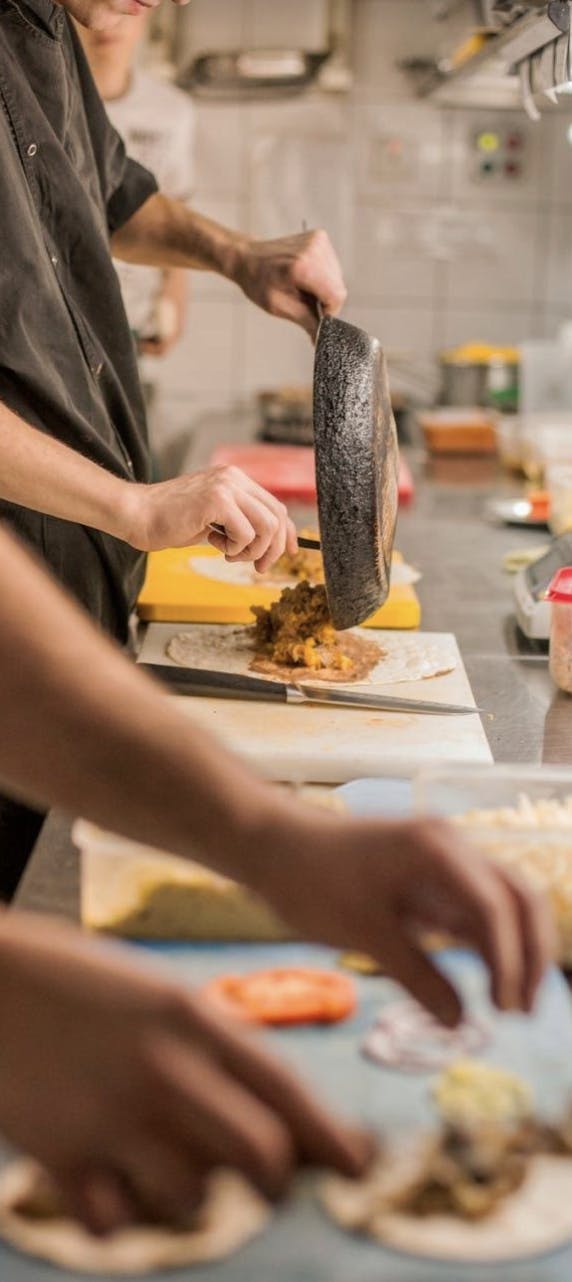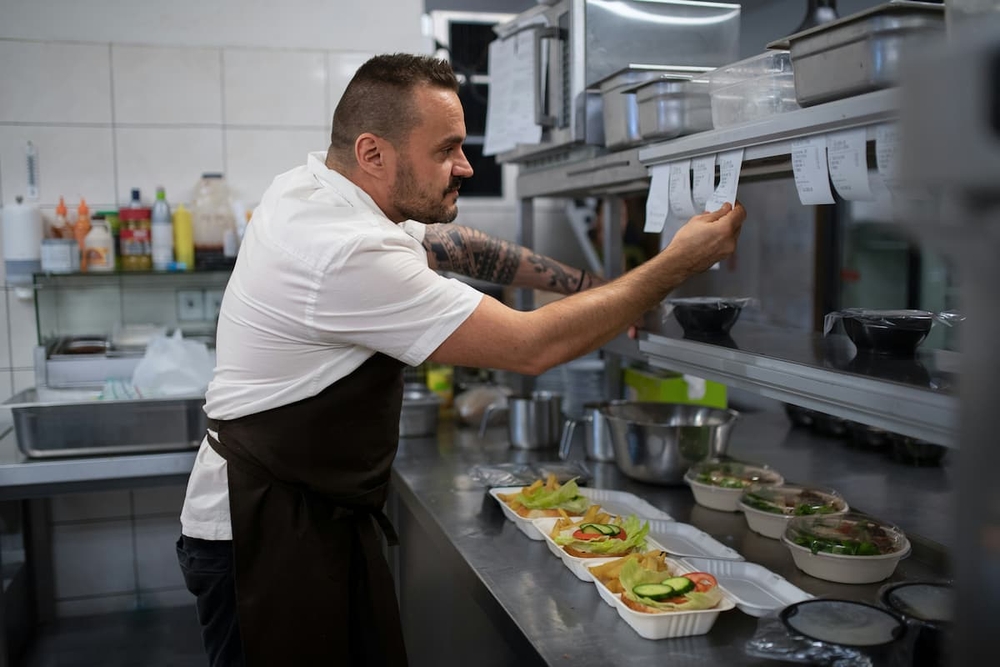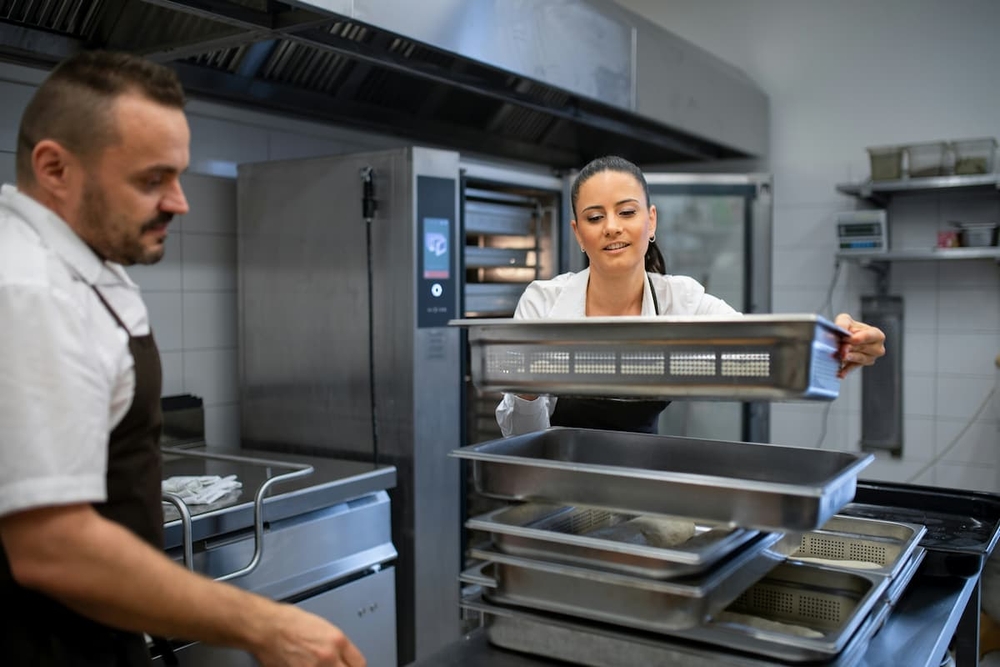Best practices for cost control in CPG kitchen operations
Table of Contents
CloudKitchens
How many tacos can be delivered from a 1000sqft restaurant?
The same amount as a 200sqft ghost kitchen.
Consumer Packaged Goods (CPG) kitchens play a crucial role in the food industry, where efficiency, consistency, and cost management determine long-term success. Whether you’re managing a small-scale production kitchen or a large commercial facility, implementing best practices for cost control is essential to maintaining profitability while delivering high-quality food products.
From ingredient sourcing and food waste reduction to process optimization and automation, there are multiple strategies food entrepreneurs and manufacturers can leverage to streamline costs without compromising product quality.
In this article, we’ll explore key methods for cost control in CPG product kitchens and provide actionable insights to help your business thrive.
Understanding cost control in CPG kitchens
Cost control in CPG kitchens refers to the systematic approach of managing expenses associated with food production, labor, inventory management, and operations.
Effective cost management enables businesses to remain competitive in the fast-paced CPG industry while ensuring product quality and compliance with food safety regulations.
Some of the primary areas of cost control include:
- Food product development: The end-to-end process of creating new food products, from concept to market launch. This includes research, ingredient selection, and production scaling, all critical for CPG kitchens.
- Sensory analysis: A scientific approach to evaluating taste, aroma, texture, and visual appeal, ensuring food products meet consumer expectations and drive brand loyalty.
- Recipe formulation: The precise development of standardized recipes for large-scale production, ensuring consistency in flavor, texture, and cost-effectiveness.
- Shelf-life testing: The systematic assessment of a product’s longevity, determining how long it remains safe, fresh, and palatable while meeting food safety standards.
- Pilot plant: A small-scale production facility used for testing and refining manufacturing processes before full-scale commercial rollout, reducing risks and inefficiencies.
- Food safety and compliance: Strict adherence to food handling, processing, and labeling regulations to ensure product safety, quality control, and legal compliance.
- Packaging innovation: Developing cost-effective, sustainable, and functional packaging solutions that extend shelf life, maintain freshness, and enhance consumer convenience.
- Process optimization: Enhancing operational efficiency by streamlining production workflows, reducing waste, and leveraging automation to minimize costs.
- Culinary science: The fusion of cooking techniques with scientific principles to develop innovative, scalable, and high-quality food products in CPG kitchens.
- Consumer trends analysis: Leveraging market data and behavioral insights to align product development with evolving consumer preferences and industry trends.
By focusing on these key areas, businesses can effectively cut down on unnecessary expenses and improve overall profitability.
Read more: How Ghost Kitchens can boost your restaurant’s profitability
Key strategies for cost control in CPG kitchens
Implementing effective cost control strategies in CPG kitchens is crucial for maintaining profitability and ensuring long-term success. Focusing on optimizing ingredient sourcing, streamlining production processes, and leveraging technology, businesses can significantly reduce expenses without compromising product quality.
Below are key strategies to help food entrepreneurs and manufacturers manage costs efficiently.
1. Optimize ingredient sourcing and inventory management
Food product development and recipe formulation play a significant role in ingredient selection, making cost-efficient sourcing essential. To manage expenses effectively:
Ingredients account for a significant portion of costs in CPG product kitchens. To manage expenses effectively:
- Work with reliable suppliers to negotiate better pricing and ensure quality consistency.
- Purchase in bulk where feasible, but avoid overstocking to prevent spoilage.
- Implement inventory tracking systems to monitor usage patterns and reduce waste.
- Use just-in-time inventory management to align purchasing with demand and minimize excess stock.
Read more: Essential tips for safe and efficient food storage in your kitchen
2. Standardize recipes and portion control
Recipe formulation and sensory analysis are vital in maintaining product consistency while managing costs. To achieve this:
- Develop standardized recipes with precise ingredient measurements to ensure cost predictability.
- Train staff on portion control to minimize food waste and ensure uniform serving sizes.
- Utilize pre-portioned ingredients where appropriate to streamline food preparation.
Read more: Restaurant Hiring/Staff 101: Comprehensive guide
3. Improve production efficiency with automation
Process optimization in CPG kitchens enhances efficiency and reduces labor costs. Consider:
- Investing in food processing equipment to speed up production and minimize human error.
- Implementing digital kitchen management systems to track production efficiency and monitor waste.
- Utilizing predictive analytics to optimize batch production and reduce ingredient overuse.
Read more: Restaurant Technology: Boost your business with the best technology trends
4. Reduce food waste through sustainable practices
Food waste contributes significantly to unnecessary costs in CPG kitchens. Strategies to reduce food waste include:
- Repurposing excess ingredients into new menu items or products.
- Donating unsellable but safe food to local organizations.
- Monitoring food waste trends to identify inefficiencies in production.
- Educating kitchen staff on waste reduction techniques.
5. Optimize labor costs and staff productivity
Culinary science and consumer trends analysis can guide staffing decisions and labor cost management. To control expenses:
- Use smart scheduling to align staff availability with peak production hours.
- Cross-train employees to ensure flexibility and reduce dependency on specific roles.
- Utilize performance metrics to identify inefficiencies and improve staff productivity.
- Incorporate technology such as automated order tracking to minimize manual labor.
6. Improve energy efficiency and equipment maintenance
Pilot plant testing and energy-efficient equipment investments help reduce long-term operational costs. To mitigate expenses:
- Invest in energy-efficient appliances that reduce electricity and gas consumption.
- Perform regular maintenance on kitchen equipment to extend its lifespan and prevent costly repairs.
- Optimize kitchen layout to improve workflow efficiency and minimize energy waste.
7. Enhance packaging and distribution efficiency
Packaging innovation ensures product integrity while keeping costs manageable. Strategies include:
- Choosing cost-effective yet durable packaging that balances quality with expense.
- Exploring sustainable packaging options that minimize waste and reduce long-term costs.
- Streamlining distribution logistics to optimize delivery routes and minimize transportation expenses.
Read more: Tips for proper food delivery packaging
Trends shaping cost control in CPG product kitchens
The evolving food industry landscape presents new opportunities for cost control. Key trends include:
- Sustainable sourcing and eco-friendly practices to meet consumer demand while reducing costs.
- Advanced data analytics and AI-driven cost optimization tools to improve decision-making.
- Direct-to-consumer models that reduce reliance on intermediaries and improve profit margins.
- Ghost kitchens and virtual brands as cost-effective alternatives to traditional food production setups.
Effective cost control in CPG kitchens is a multi-faceted process requiring strategic planning, efficiency improvements, and smart financial management. By optimizing ingredient sourcing, improving production efficiency, reducing waste, and leveraging automation, businesses can enhance profitability while maintaining high-quality standards.
Scale your CPG kitchen operations with CloudKitchens
At CloudKitchens, we provide flexible and fully-equipped kitchen solutions designed to help CPG businesses scale efficiently while managing costs. Our innovative kitchen spaces streamline operations, reduce overhead expenses, and maximize productivity.
Ready to take your CPG kitchen to the next level? Contact CloudKitchens today to explore our cost-effective solutions.
DISCLAIMER: This information is provided for general informational purposes only and the content does not constitute an endorsement. CloudKitchens does not warrant the accuracy or completeness of any information, text, images/graphics, links, or other content contained within the blog content. We recommend that you consult with financial, legal, and business professionals for advice specific to your situation.
More insights & stories
There’s more where that came from.
Get in the know and check out our additional insights


